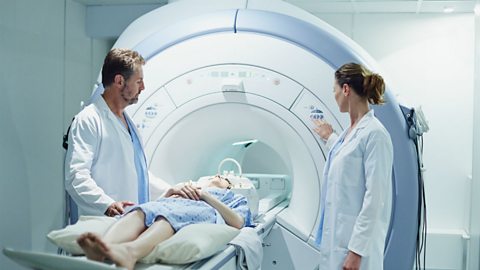Investigating the brain - Higher
Modern science has allowed scientists to discover how different parts of the brain function. Neuroscientists have been able to map various regions of the brain to particular functions by studying patients with brain damage, electrically stimulating different parts of the brain and using MRIMagnetic Resonance Imaging - A computer that can scan the human body using magnetic fields and radio waves, used in medicine. scanning techniques.
Brain damage
A well-documented example of brain damage is of Phineas Gage, who in 1848 had a serious accident whilst laying railway tracks and an iron rod went through his skull.
Phineas survived the accident, but it was documented that his personality changed following it. It was noted that he lost his inhibitions socially and emotionally.
Doctors realised the changes in Phineas were due to the damage in the particular parts of the brain that the iron rod had passed through. This important case allowed scientists to examine the effect of the injuries on his brain activity.
Non-invasive brain procedures include:
Electrical stimulation
Scientists have stimulated different parts of the brain with a weak electrical current and asked patients to describe what they experienced. If the motor area is stimulated, the patient makes an involuntary movement. If the visual area is stimulated, they may see a flash of colour. EEGs (Electroencephalograms) can be created and studied, to observe the electrical activity in the brain.
MRI brain scans
Modern imaging methods such as MRI (Magnetic Resonance Imaging) scans, use strong magnetic fields and radio waves to show details of brain structure and function. Patients are asked to perform various tasks and, by looking at the scan, scientists can see which parts of the brain are active when the task is carried out.

Risks
Brain surgery may be needed to remove a tumour or excess fluid, such as blood. All surgery carries a level of risk, but due to the complexity and delicacy of the brain, investigating and treating brain disorders can be very difficult. If surgery is undergone more damage or side-effects may be created, which could affect the patients' quality of life. Serious considerations about the risks involved against the benefits need to be undertaken first.